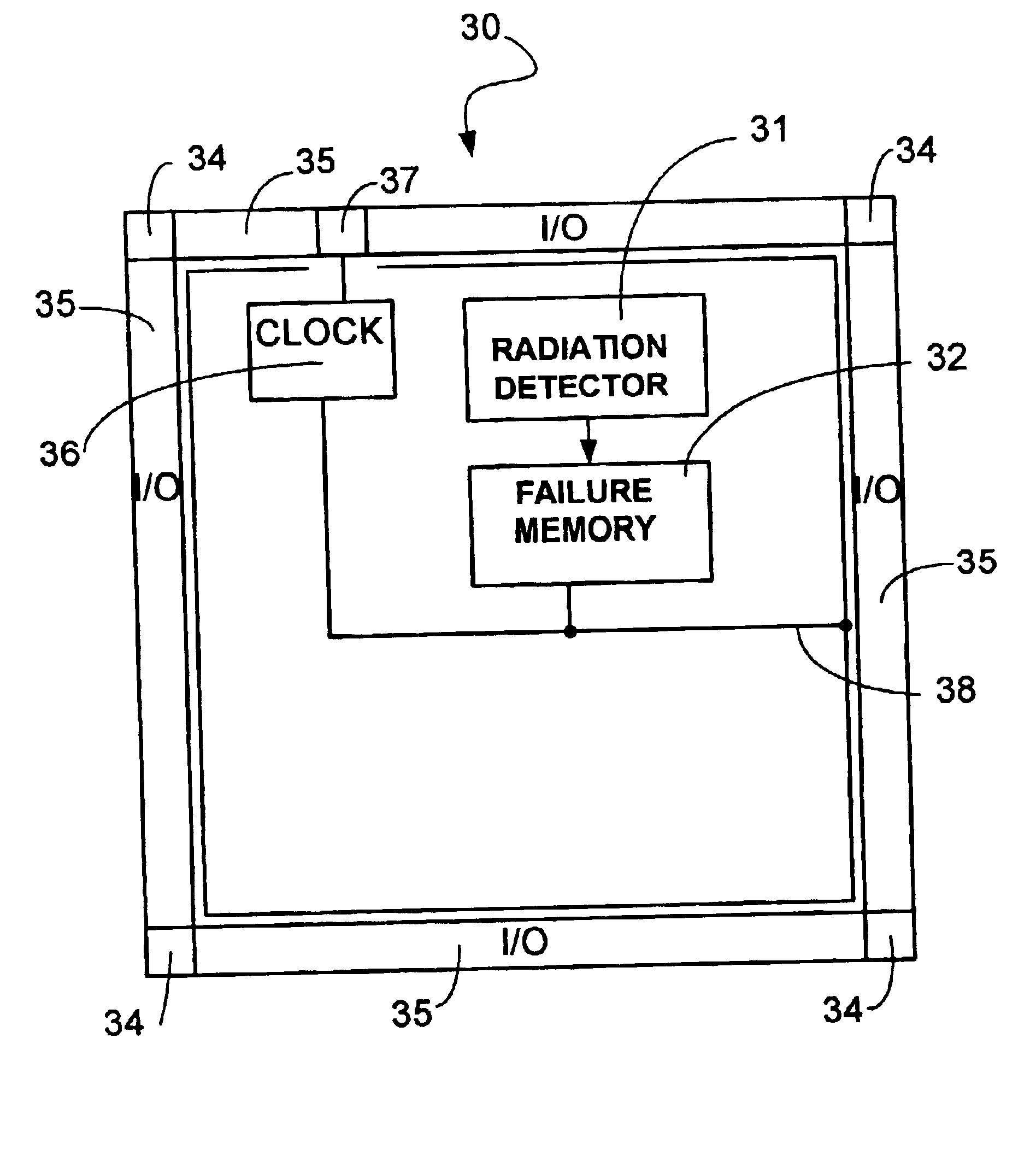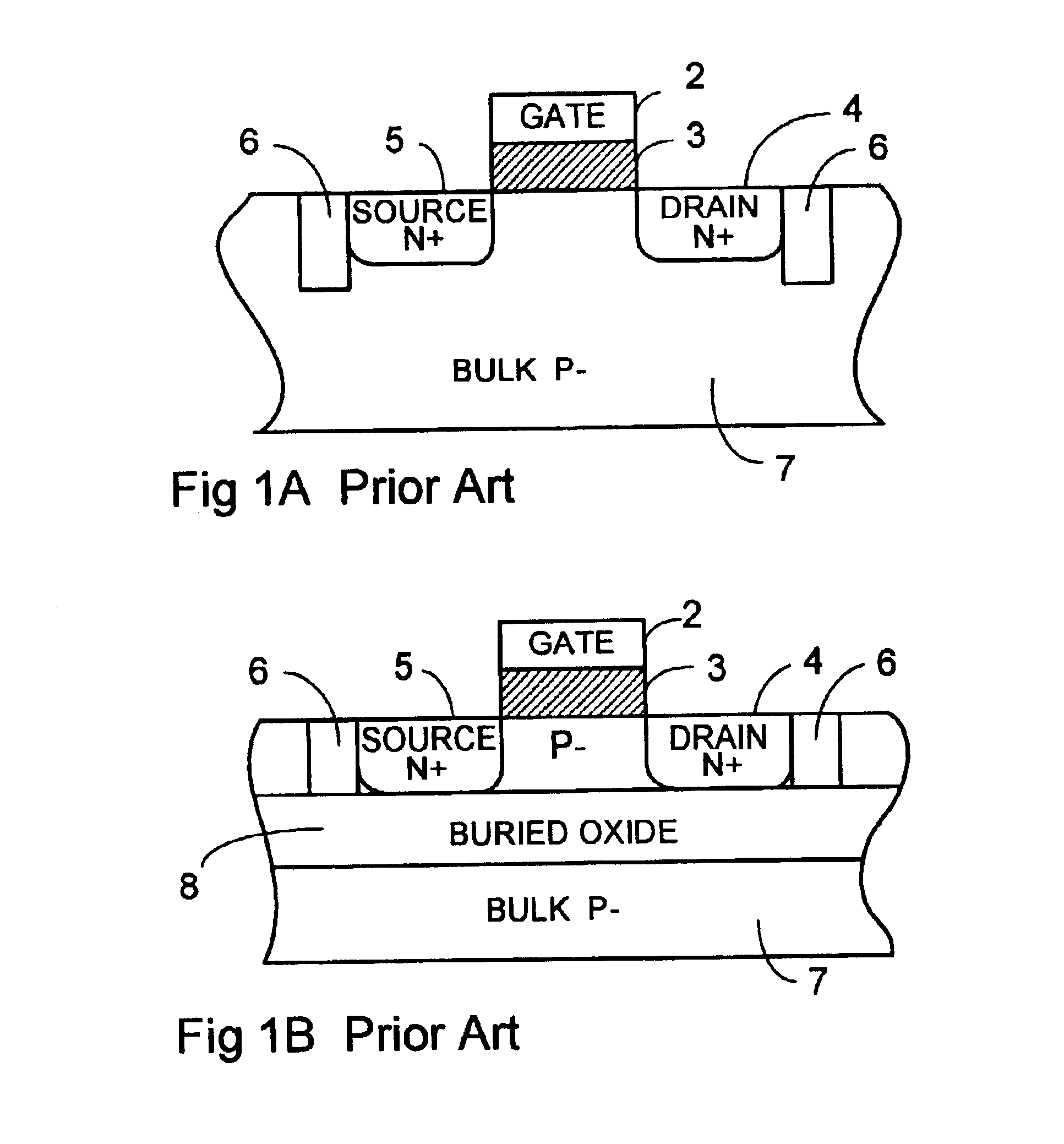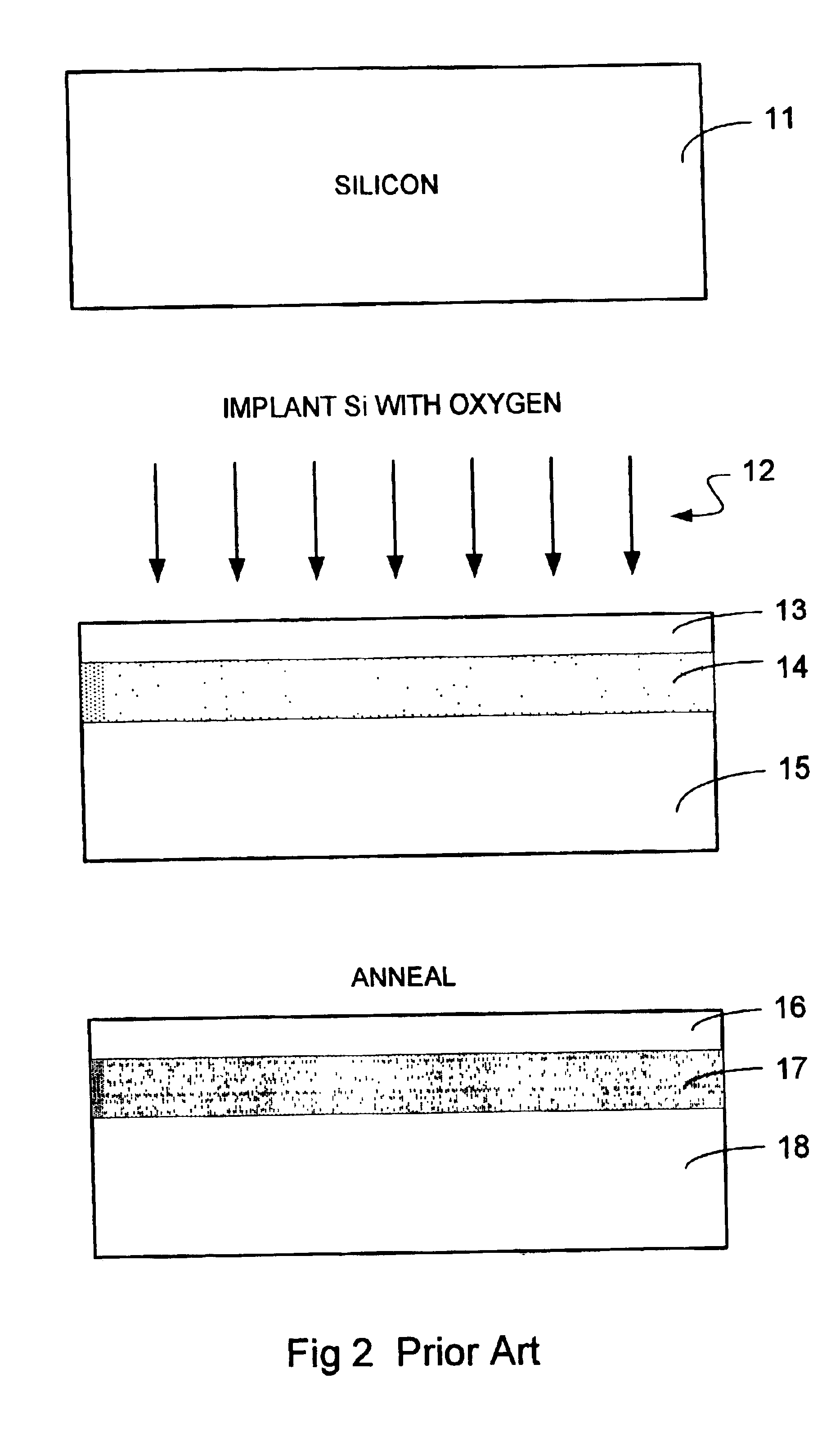Method and apparatus to make a semiconductor chip susceptible to radiation failure
a technology of semiconductor chips and radiation failure, applied in the field of semiconductor chips, can solve the problems of limiting the performance of microprocessors, limiting the frequency increase, and large capacitance in reverse-biased junctions associated with nfet and pfet, etc., to achieve easy and broad market promotion, preserve power and performance competitive, and less radiation hard
- Summary
- Abstract
- Description
- Claims
- Application Information
AI Technical Summary
Benefits of technology
Problems solved by technology
Method used
Image
Examples
Embodiment Construction
[0054]Having reference now to the figures, the present invention will be described in detail.
[0055]FIG. 1A shows a cross section of a conventional N-channel Field Effect Transistor (NFET), comprising a gate 2, a gate oxide 3, a drain 4, a source 5, and shallow trench isolation 6, constructed in a bulk P− silicon substrate. Such a structure is sensitive to radiation. A high-energy particle (not shown) will ionize a region in the bulk P− substrate 7. Positive charges will be drawn off to a low voltage supply (usually ground) to which the substrate is coupled. Negative charges will be attracted to a positively charged drain 4. In precharged circuits, such as Dynamic Random Access Memory (DRAM) precharged logic, or in high-impedance circuits such Static Random Access Memory (SRAM), the accumulation of the negative charges on a positively-charged N+ drain, can cause faulty operation. Similarly, accumulation of positive charges on a negatively precharged P+ drain can cause faulty operatio...
PUM
 Login to View More
Login to View More Abstract
Description
Claims
Application Information
 Login to View More
Login to View More - R&D
- Intellectual Property
- Life Sciences
- Materials
- Tech Scout
- Unparalleled Data Quality
- Higher Quality Content
- 60% Fewer Hallucinations
Browse by: Latest US Patents, China's latest patents, Technical Efficacy Thesaurus, Application Domain, Technology Topic, Popular Technical Reports.
© 2025 PatSnap. All rights reserved.Legal|Privacy policy|Modern Slavery Act Transparency Statement|Sitemap|About US| Contact US: help@patsnap.com



